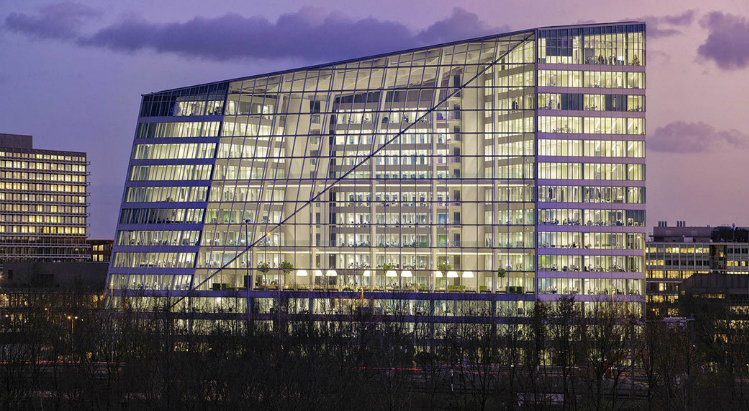Today’s report on climate change from the U.N. scientific panel on the topic is truly sobering. But it also lays out a set of roadmaps to avoid catastrophe, and it makes clear that the building sector would have to play a role in any route out of this mess.
Global Warming of 1.5°C was prepared by the Intergovernmental Panel on Climate Change at the behest of island nations most threatened by sea-level rise. The mandate was to review the likelihood, causes and impacts of a global climate increase of 1.5 degrees Celsius, or 2.7 degrees Fahrenheit, as well as potential ways to avoid such a future. The report isn’t a research document in itself. Rather, it’s an “assessment” of current research that includes more than 6,000 scientific citations, according to IPCC.
News coverage is bound to focus on the dreadful projected impacts — particularly, on the surprising finding that the world is on track to reach that 1.5°C threshold in just over two decades, and on the dire warning that rapid “changes in all aspects of society” must occur by 2030 for catastrophe to be avoided.
If you’re looking for solutions, however, turn to Chapter 2: “Mitigation pathways compatible with 1.5°C in the context of sustainable development.” The chapter breaks out sectors that are closely tied to the built environment, including industry, transport, land-use changes and the energy sector itself. That causes the building sector to count as a smaller contributor to climate change than numbers often cited by organizations such as the U.S. Green Building Council.
But however the sources of greenhouse gases are segmented, the construction and operation of buildings remains a huge contributor. Here, in full, is section 2.4.3.2 (from Chapter 2), entitled simply “Buildings.” It’s thick and abstract reading, with many of the references and abbreviations difficult to understand out of context. But, if you cut through the jargon, it’s useful reading for anyone involved in the building sector. At the very least, it confirms that the steps many architects, engineers, builders and owners are taking toward sustainability are moving in the right direction — but that they need to be taken more quickly and adopted more broadly.
In 2014, the buildings sector accounted for 31% of total global final-energy use, 54% of final-electricity demand, and 8% of energy-related CO2 emissions (excluding indirect emission due to electricity). When upstream electricity generation is taken into account, buildings were responsible for 23% of global energy related CO2 emissions, with one-third of those from direct fossil fuel consumption (IEA, 2017a).
Past growth of energy consumption has been mainly driven by population and economic growth, with improved access to electricity, and higher use of electrical appliances and space cooling resulting from increasing living standards, especially in developing countries (Lucon et al., 2014). These trends will continue in the future and in 2050, energy consumption is projected to increase by 20% (50%) compared to 2010 in IAM-1.5°C-overshoot (2°C-consistent) pathways (Figure 2.22). However, sectoral studies (IEA-ETP scenarios) show different trends. Energy consumption in 2050 decreases compared to 2010 in ETP-B2DS, and the reduction rate of CO2 emissions is higher than in IAM pathways (Figure 2.22). Mitigation options are often more widely covered in sectoral studies (Lucon et al., 2014), leading to greater reductions in energy consumption and CO2 emissions.
Emissions reductions are driven by a clear tempering of energy demand and a strong electrification of the buildings sector. The share of electricity in 2050 is 60% in 1.5°C-overshoot pathways, compared with 50% in 2°C-consistent pathways (Figure 2.22). Electrification contributes to the reduction of direct CO2 emissions by replacing carbon-intensive fuels, like oil and coal. Furthermore, when combined with a rapid decarbonisation of the power system (see Section 2.4.1) it also enables further reduction of indirect CO2 emissions from electricity. Sectoral bottom-up models in general estimate lower electrification potentials for the buildings sector in comparison to global IAMs (see Figure 2.22). Besides CO2 emissions, increasing global demand for air conditioning in buildings may also lead to increased emissions of HFCs in this sector over the next few decades. Although these gases are currently a relatively small proportion of annual GHG emissions, their use in the air conditioning sector is expected to grow rapidly over the next few decades if alternatives are not adopted. However, their projected future impact can be significantly mitigated through better servicing and maintenance of equipment and switching of cooling gases (Shah et al., 2015; Purohit and Höglund-Isaksson, 2017).
IEA-ETP (IEA, 2017a) analysed the relative importance of various technology measures toward the reduction of energy and CO2 emissions in the buildings sector. The largest energy savings potential is in heating and cooling demand largely due to building envelope improvements and high efficiency and renewable equipment. In the ETP-B2DS, energy demand for space heating and cooling is 33% lower in 2050 than the reference scenario and these reductions account for 54% of total reductions from the reference scenario. Energy savings from shifts to high-performance lighting, appliances, and water heating equipment account for a further 24% of the total reduction. The long-term, strategic shift away from fossil-fuel use in buildings, alongside the rapid uptake of energy efficient, integrated and renewable energy technologies (with clean power generation), leads to a drastic reduction of CO2 emissions. In ETP-B2DS, the direct CO2 emissions are 79% lower than the reference scenario in 2050 and the remaining emissions come mainly from the continued use of natural gas.
PHOTO ABOVE: The Edge, Deloitte’s headquarters in Amsterdam, employs radical energy efficiencies claims to be the “world’s greenest” large office building. Photo courtesy: PLP Architects.


